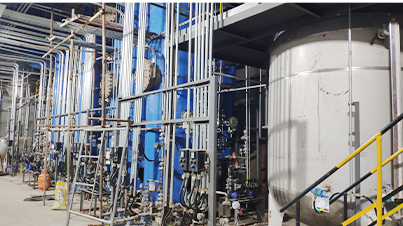isothiazolinone other names
Understanding Isothiazolinones Their Names, Uses, and Safety Considerations
Isothiazolinones are a class of synthetic biocidal compounds that are widely used as preservatives to prevent microbial growth in various products, including cosmetics, personal care items, and industrial applications. They are known for their efficacy against bacteria, fungi, and algae, making them indispensable in maintaining the integrity and safety of many consumer goods. This article delves into the various names by which isothiazolinones are known, their applications, and safety considerations associated with their use.
Common Names and Variants
Isothiazolinones encompass several different compounds, with the two most commonly encountered being methylisothiazolinone (MIT) and chloromethylisothiazolinone (CMIT). These substances are often referred to collectively as MIT/CMIT due to their frequent co-usage in formulations. Let's explore these names in more detail
- Methylisothiazolinone (MIT) This is perhaps the most recognized member of the isothiazolinone family. It is frequently used in cosmetic and personal care products, such as shampoos, lotions, and wipes, due to its powerful antimicrobial properties.
- Chloromethylisothiazolinone (CMIT) Often accompanied by MIT, CMIT serves similar purposes and enhances the overall preservative efficacy of formulations
. Some products may merely specify the use of isothiazolinones without differentiating between the two, as both are used for their synergistic effects.- Isothiazolinone As a generic term, this captures a broader family of compounds, which includes other variants like octylisothiazolinone and benzisothiazolinone. These compounds are utilized industrially and in household products, particularly as fungicides, biocides, and algae inhibitors.
Applications of Isothiazolinones
isothiazolinone other names

The primary application of isothiazolinones lies in their ability to protect products from degradation caused by microorganisms. In personal care products, they help extend shelf life and ensure the safety of the product for consumer use. In industrial settings, they are employed in cooling water systems, paint formulations, and paper manufacturing to combat microbial contamination.
The robustness of isothiazolinones against a variety of microbes makes them a preferred choice in formulations that require long-lasting efficacy. They are particularly valuable in scenarios where products are exposed to moisture, which encourages microbial growth.
Safety Considerations
Despite their effectiveness, concerns have been raised regarding the safety of isothiazolinones. Reports of allergic reactions and sensitivities, especially to MIT, have been an increasing issue among consumers and dermatologists. The International Contact Dermatitis Research Group has recognized MIT as a common sensitizer. As a result, regulatory bodies in various regions have established guidelines for their concentration limits in commercial products.
For instance, in the European Union, the use of isothiazolinones is tightly regulated, with specific concentrations permitted in cosmetic products. Consumers are advised to perform patch tests when trying new personal care items containing these preservatives. Furthermore, manufacturers are encouraged to explore alternative preservatives that deliver similar effectiveness without the potential for allergic reactions.
Conclusion
Isothiazolinones, including methylisothiazolinone and chloromethylisothiazolinone, play crucial roles in maintaining the safety and longevity of many everyday products. However, the associated health risks highlight the importance of careful formulation and consumer awareness. As research continues to evolve, the industry may increasingly lean towards safer alternatives that do not compromise efficacy, ensuring that both product performance and consumer health are prioritized. Understanding the names, uses, and safety implications of isothiazolinones is essential for consumers and manufacturers alike in today's market.
-
Water Treatment with Flocculant Water TreatmentNewsJun.12,2025
-
Polymaleic AnhydrideNewsJun.12,2025
-
Polyaspartic AcidNewsJun.12,2025
-
Enhance Industrial Processes with IsothiazolinonesNewsJun.12,2025
-
Enhance Industrial Processes with PBTCA SolutionsNewsJun.12,2025
-
Dodecyldimethylbenzylammonium Chloride SolutionsNewsJun.12,2025





